
The Sejm, officially known as the Sejm of the Republic of Poland, is the lower house of the bicameral parliament of Poland.

The president of the Council of Ministers, colloquially referred to as the prime minister, is the head of the cabinet and the head of government of Poland. The responsibilities and traditions of the office stem from the creation of the contemporary Polish state, and the office is defined in the Constitution of 1997. According to the Constitution, the president nominates and appoints the prime minister, who will then propose the composition of the Cabinet. Fourteen days following their appointment, the prime minister must submit a programme outlining the government's agenda to the Sejm, requiring a vote of confidence. Conflicts stemming from both interest and powers have arisen between the offices of President and Prime Minister in the past.

The president of Poland, officially the president of the Republic of Poland, is the head of state of Poland. Their rights and obligations are determined in the Constitution of Poland. The president heads the executive branch. In addition, the president has the right to dissolve parliament in certain cases, can veto legislation and represents Poland in the international arena.
The Government of Poland takes the form of a unitary parliamentary representative democratic republic, whereby the President is the head of state and the Prime Minister is the head of government. However, its form of government has also been identified as semi-presidential.
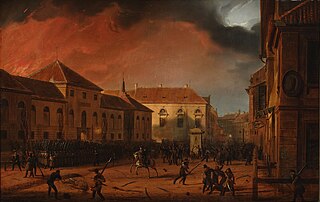
The November Uprising (1830–31), also known as the Polish–Russian War 1830–31 or the Cadet Revolution, was an armed rebellion in the heartland of partitioned Poland against the Russian Empire. The uprising began on 29 November 1830 in Warsaw when young Polish officers from the military academy of the Army of Congress Poland revolted, led by Lieutenant Piotr Wysocki. Large segments of the peoples of Lithuania, Belarus, and the Right-bank Ukraine soon joined the uprising. Although the insurgents achieved local successes, a numerically superior Imperial Russian Army under Ivan Paskevich eventually crushed the uprising. The Russian Emperor Nicholas I issued the Organic Statute in 1832, according to which henceforth Russian-occupied Poland would lose its autonomy and become an integral part of the Russian Empire. Warsaw became little more than a military garrison, and its university closed.

The Senate is the upper house of the Polish parliament, the lower house being the Sejm. The history of the Polish Senate stretches back over 500 years; it was one of the first constituent bodies of a bicameral parliament in Europe and existed without hiatus until the final partition of the Polish state in 1795. The contemporary Senate is composed of 100 senators elected by a universal ballot and is headed by Marshal of the Senate. The incumbent Marshal of the Senate is Tomasz Grodzki.
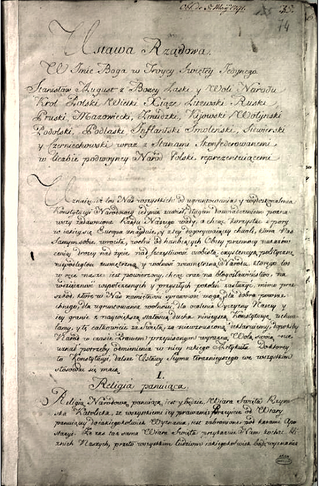
The Constitution of 3 May 1791, titled the Governance Act, was a constitution adopted by the Great Sejm for the Polish–Lithuanian Commonwealth, a dual monarchy comprising the Crown of the Kingdom of Poland and the Grand Duchy of Lithuania. The Constitution was designed to correct the Commonwealth's political flaws. It had been preceded by a period of agitation for—and gradual introduction of—reforms, beginning with the Convocation Sejm of 1764 and the ensuing election that year of Stanisław August Poniatowski, the Commonwealth's last king.

Kazimierz Władysław Bartel was a Polish mathematician, freemason, scholar, diplomat and politician who served as 15th, 17th and 19th Prime Minister of Poland three times between 1926 and 1930 and the Senator of Poland from 1937 until the outbreak of World War II.

Janusz Jędrzejewicz was a Polish politician and educator, a leader of the Sanacja political group, and 24th Prime Minister of Poland from 1933 to 1934.
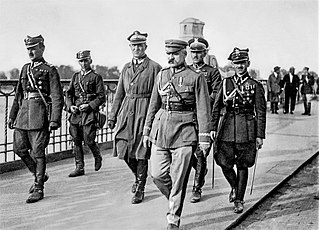
The May Coup was a coup d'état carried out in Poland by Marshal Józef Piłsudski from 12 to 14 May 1926. The attack of Piłsudski's supporters on government forces resulted in an overthrow of the democratically-elected government of President Stanisław Wojciechowski and Prime Minister Wincenty Witos and caused hundreds of fatalities. A new government was installed, headed by Kazimierz Bartel. Ignacy Mościcki became president. Piłsudski remained the dominant politician in Poland until his death in 1935.
The current Constitution of Poland was founded on 2 April 1997. Formally known as the Constitution of the Republic of Poland, it replaced the Small Constitution of 1992, the last amended version of the Constitution of the Polish People's Republic, known from December 1989 as the Constitution of the Republic of Poland. It was adopted by the National Assembly of Poland on 2 April 1997, approved by a national referendum on 25 May 1997, promulgated by the President of the Republic on 16 July 1997, and came into effect on 17 October 1997.
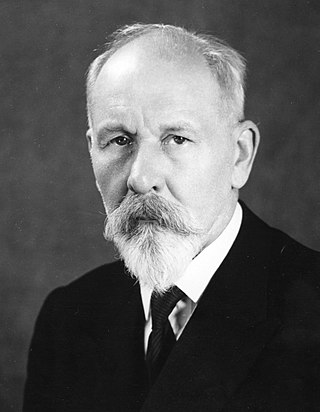
Tomasz Stefan Arciszewski was a Polish socialist politician, a member of the Polish Socialist Party and the 31st Prime Minister of Poland, 3rd Prime Minister of the Polish government-in-exile in London from 1944 to 1947 during which the government lost the recognition of the Western powers.

Walery Jan Sławek was a Polish politician, freemason, military officer and activist, who in the early 1930s served three times as Prime Minister of Poland. He was one of the closest aides of Polish leader, Józef Piłsudski.
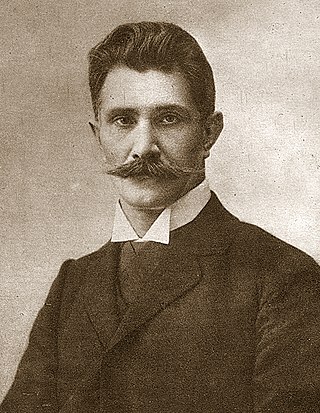
Ignacy Ewaryst Daszyński was a Polish socialist politician, journalist, and very briefly Prime Minister of the Second Polish Republic's first government, formed in Lublin in 1918.

The parliament of Poland is the bicameral legislature of Poland. It is composed of an upper house and a lower house. Both houses are accommodated in the Sejm complex in Warsaw. The Constitution of Poland does not refer to the Parliament as a body, but only to the Sejm and Senate.

The Constitution of the Polish People's Republic was a supreme law passed in communist-ruled Poland on 22 July 1952. It superseded the post-World War II provisional Small Constitution of 1947, which in turn replaced the pre-war April Constitution of 1935.

The War Order of Virtuti Militari is Poland's highest military decoration for heroism and courage in the face of the enemy at war. It was created in 1792 by Polish King Stanislaus II Augustus and is the oldest military decoration in the world still in use.
The Constitution of the Kingdom of Poland was granted to the 'Congress' Kingdom of Poland by King of Poland Alexander I of Russia in 1815, who was obliged to issue a constitution to the newly recreated Polish state under his domain as specified by the Congress of Vienna. It was considered among the most liberal constitutions of its time; however, it was never fully respected by the government. It was modified during the November Uprising by the revolutionary government and discarded afterwards by the victorious Russian authorities in 1832.
The Sejm of Congress Poland was the parliament in the 19th century Kingdom of Poland, colloquially known as Congress Poland. It existed from 1815 to 1831. In the history of the Polish parliament, it succeeded the Sejm of the Duchy of Warsaw.

The National Council of the Judiciary is the national council of the judiciary of Poland. It is a public body in Poland responsible for nominating judges and reviewing ethical complaints against sitting jurists.

















